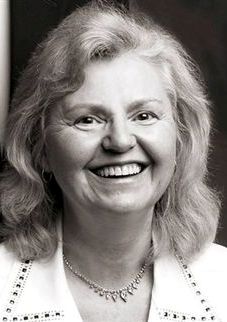Rheumatoid arthritis (RA) is a chronic, systemic inflammatory disorder that may affect many tissues and organs, but principally attacks flexible (synovial) joints.
About 1% of the world's population is afflicted by rheumatoid arthritis, women three times more often than men. Onset is most frequent between the ages of 40 and 50, but people of any age can be affected.
In my latest release,
Dance of Love, it is the hero, Izzy de Montbryce, who is afflicted.
RA can be a disabling and painful condition, which can lead to substantial loss of functioning and mobility. Imagine a medieval warrior who cannot wield a sword when his condition flares.
Fortunately, my heroine, Farah, has studied medicine in the east, particularly the treatises of an Islamic physician, Al-Kindi. He was born in Basra three hundred years before my story, which is set in 1107 AD. His father was the emir of Kufa. His family were direct descendants of the King of Kinda, companion of the Prophet. He was highly revered as a great physician by Muslim peoples.
Farah compounds one of Al-Kindi’s recipes for easing the pain of arthritis. Here is the medieval recipe for Drug for the Spirits:
(modern weight equivalents included)
Colchicum 12 mithqals 53.53 grams
Leaf of Meccan Henna 1 mithqal 4.46 grams
Caper leaf 1 mithqal 4.46 grams
Pepper 1 mithqal 4.46 grams
Long pepper 1 mithqal 4.46 grams
Cinnamon 1 mithqal 4.46 grams
Indian cumin 1 mithqal 4.46 grams
Ginger 1 mithqal 4.46 grams
Dry Storax ¼ mithqal 4.46 grams
Cuttlefish bone ¼ mithqal 1.115 grams
Sal ammoniac (fossil salt) ¼ mithqal 1.115 grams
Salt ¼ mithqal 1.115 grams
The ingredients of this recipe are pulverized and kneaded with honey. One dose is 5 dirhams (15.625 grams), which is taken with food.
Al-Kindi uses colchicum instead of colocynth. The colchicum is counterbalanced by the use of ginger to prevent accidental poisoning. The salts and dry storax are used to decrease the toxicity. The use of cuttlefish bone and the salts help flush the colchicum out of the body after it has served its purpose. The use of caper leaves, long and black pepper, cinnamon, and ginger helps the digestive system maintain its regularity, with the caper leaf activating the bowels. One of the problems with the use of colchicum is its actions on the bowels allows them to act too freely, so the use of henna leaves are used to prevent diarrhea. Another problem with the use of colchicum is the decrease in the heart rate, so the use of cinnamon is used to regulate the heart, and it is used to prevent spasms and strokes.
Known as Al-Kindi in the Western world, Abu Yusuf Ya’qub ibn. Ishaq al-Kindi was most likely born in Basra in 800 C.E. Although Al-Kindi was educated in Baghdad in philosophy, he is a major figure in the translation of Greek, Persian, and Syriac works into Arabic. As for Al-Kindi’s works, there are over 300 known treatises from many different subject matters. Little more is known about his life except that he died sometime after 870 C.E.
 (Thanks to MUSTO, CHRISTOPHER JOHN. The Ancient and Medieval Pharmaceutical Treatments for Arthritis, Gout, and Sciatica. (Under the direction of Dr. John M. Riddle)).
(Thanks to MUSTO, CHRISTOPHER JOHN. The Ancient and Medieval Pharmaceutical Treatments for Arthritis, Gout, and Sciatica. (Under the direction of Dr. John M. Riddle)). But there is something else Farah does for Izzy that helps him overcome his physical limitations. However, telling you what it is will spoil the story!
The plot revolves around the possibility of miracles. Farah believes in them, Izzy does not.
I have dedicated the book to all who suffer the debilitating pain of arthritis.

























